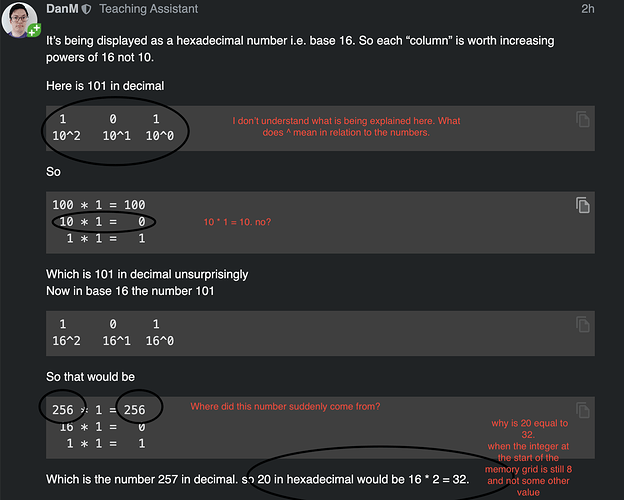I have watched this lecture about 10 times and read all the comments and still I am confused about one thing, which is annoying because I’m fairly certain I understand the rest of it. I’ll explain my thought process as clearly as possible so maybe someone can show me the light.
At 3:28 Michael says “and then we have another integer down here… hmm I wonder what that is?”
I’m told that the first integer had a value of 8 because “8” is clearly displayed and followed by the bytes that an int32 requires - 08 00 00 00
Following this logic I didn’t see any mystery in the second integer, it has a value of 20, and because its an integer it requires a total of 4 bytes so it is followed by 00 00 00.
BUT WAIT!
Why am I being asked what that integer is when I can see its value right there?
And why is Micheal now telling me that the integer I thought had a value of 20 actually is an integer with a value of 32?


 . I made notes on what was going through my head as I read through.
. I made notes on what was going through my head as I read through. 